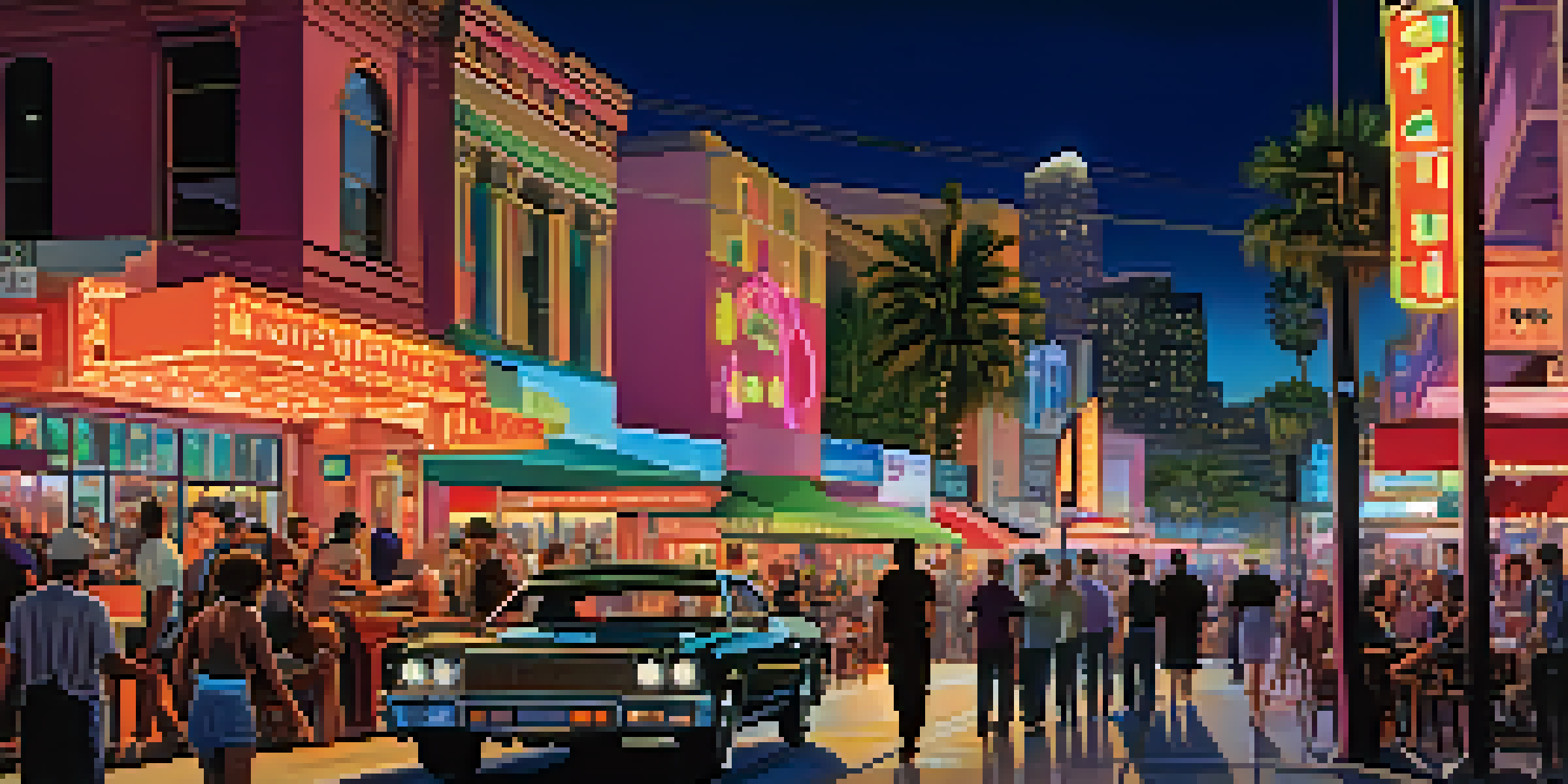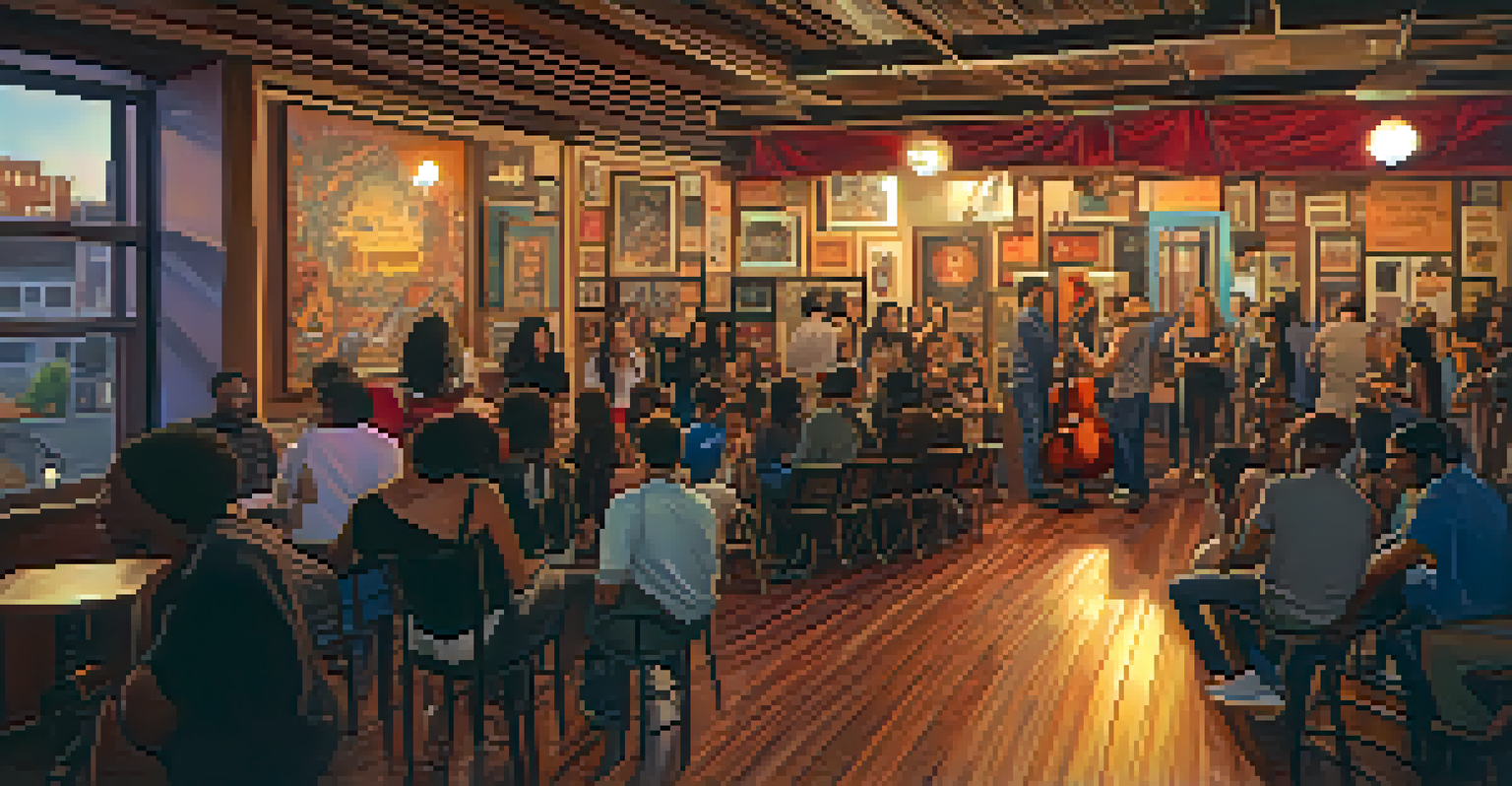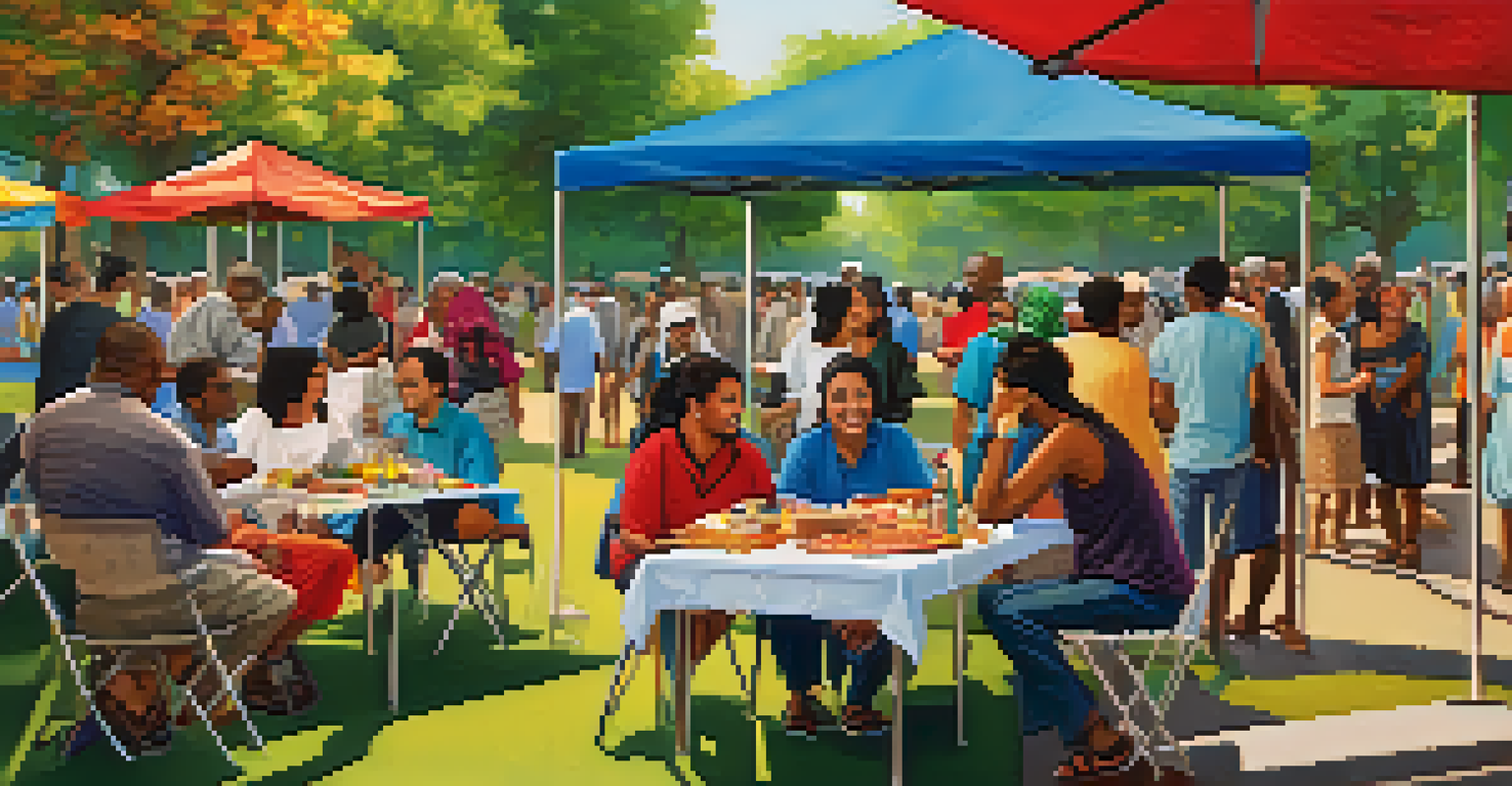Gentrification and Nightlife: LA's Changing Neighborhoods

Understanding Gentrification in Los Angeles
Gentrification refers to the transformation of urban neighborhoods through an influx of new residents and businesses. In Los Angeles, this often means higher rents and a shift in the cultural landscape. While it can lead to revitalization, it also raises concerns about the displacement of long-time residents. The balance of community identity and economic development is a key aspect of this issue.
Gentrification is not just a trend; it's a complex process that impacts the lives of many, often in ways that benefit some while displacing others.
Historically, areas like Echo Park and Silver Lake have seen dramatic changes, driven by the desire for trendy dining and nightlife options. Local institutions that once defined these neighborhoods often struggle to survive as the new crowd arrives. This push and pull creates a complex dynamic where both old and new residents must navigate their evolving community.
Ultimately, understanding gentrification in LA requires a look at its social and economic implications. The nightlife scene is often at the forefront of these changes, reflecting broader trends in community development. As bars and restaurants cater to a wealthier clientele, the question arises: at what cost does this development come to local culture?
The Impact of Nightlife on Gentrifying Neighborhoods
Nightlife plays a significant role in the gentrification process, often acting as a catalyst for change. New bars and clubs attract a different demographic, which can lead to rising property values and rents. This influx of nightlife options can make neighborhoods more desirable, but it can also alienate those who have lived there for generations.

Take neighborhoods like Highland Park, where new establishments have transformed the area into a nightlife hotspot. While this brings vibrancy, it simultaneously pressures local businesses that can’t compete with the deep pockets of new enterprises. The community must grapple with the reality of these changes, balancing excitement with the risk of losing its historical character.
Gentrification reshapes communities
The influx of new residents and businesses in Los Angeles leads to higher rents and cultural shifts, often displacing long-time residents.
As nightlife evolves, so too does the conversation around inclusivity and access. New venues may cater to specific tastes or demographics, leaving behind those who contributed to the area's original charm. Addressing these disparities is crucial for fostering a nightlife scene that respects the community’s roots while embracing change.
Local Businesses: The Backbone of Nightlife
Local businesses are often the lifeblood of a neighborhood’s nightlife, providing unique experiences and fostering community ties. However, as gentrification takes hold, these establishments face increasing challenges. Many struggle to keep up with rising rents and changing clientele, leading to a loss of cherished local spots.
The best way to predict the future is to create it.
Consider the small bars and music venues that once defined an area’s cultural identity. As larger chains move in, these local gems may find it hard to compete and, unfortunately, may close their doors. This loss not only affects the nightlife but also the community’s fabric, as these businesses often serve as gathering places for locals.
Supporting local businesses during this transition is vital for maintaining the neighborhood’s unique character. Encouraging patronage of these establishments can help preserve the essence of the area, ensuring that it remains a place where both new and long-time residents can feel at home. A thriving local scene benefits everyone, creating a richer nightlife experience.
The Role of Art and Culture in Nightlife
Art and culture are integral to the nightlife landscape in gentrifying neighborhoods. They often serve as a bridge between old and new residents, fostering connections through shared experiences. Music, art shows, and cultural events can enrich the nightlife, providing spaces for dialogue and understanding.
For example, venues that feature local artists or musicians can create a sense of community amidst the changes. These events not only draw in crowds but also highlight the rich cultural history of the area. By celebrating local talent, neighborhoods can maintain a connection to their roots even as they evolve.
Nightlife drives neighborhood change
New bars and clubs attract wealthier demographics, raising property values while potentially alienating long-standing community members.
However, as commercial interests take over, there’s a risk of diluting this cultural expression. Protecting and promoting local art and culture is essential for ensuring that the nightlife remains reflective of the community's diverse voices. This balance can help create a vibrant, inclusive atmosphere that honors the past while embracing the future.
Community Response: Activism and Advocacy
As gentrification reshapes neighborhoods, community activism often emerges as a powerful response. Residents may mobilize to protect local businesses, advocate for affordable housing, or preserve cultural landmarks. Such efforts can create a collective voice that influences local policy and development decisions.
One notable example is the grassroots movements in neighborhoods like Boyle Heights, where residents have fought against the encroachment of art galleries and upscale businesses. Their efforts highlight the importance of community input in shaping the future of their neighborhoods. This activism reflects a desire to maintain identity and resist displacement.
Advocacy can take many forms, from organizing protests to creating community forums for discussion. Engaging in these dialogues is crucial for ensuring that all voices are heard in the gentrification process. Through collective action, communities can work towards a future that respects both new developments and existing residents.
Navigating the Future of LA's Nightlife
Looking ahead, the future of LA's nightlife will continue to be intertwined with the city’s gentrification narrative. As neighborhoods evolve, so too will the opportunities and challenges that come with them. Understanding this relationship is essential for creating a nightlife scene that is vibrant, inclusive, and reflective of the community.
New developments will undoubtedly bring fresh energy, but they must be approached with consideration for existing residents. Striking a balance between progress and preservation is key to fostering a nightlife that benefits everyone. This means supporting local businesses, promoting cultural events, and ensuring equitable access to new venues.
Local businesses face tough challenges
As gentrification progresses, cherished local establishments struggle to compete with larger chains, risking the loss of community identity.
Ultimately, the success of LA's nightlife hinges on collaboration between new arrivals and long-time residents. By embracing diversity and respecting the past, communities can create a nightlife experience that honors their unique identities. The evolution of these neighborhoods doesn't have to mean the loss of their soul.
Conclusion: A Complex Tapestry of Change
Gentrification and nightlife in Los Angeles are part of a complex and ongoing narrative. As neighborhoods change, so do the experiences and identities of their residents. This evolving tapestry reflects the hopes, challenges, and dreams of a diverse community grappling with the impacts of change.
While new nightlife options can bring excitement and opportunity, the need for balance and inclusivity remains paramount. Ensuring that the voices of long-time residents are heard is critical in shaping a future that honors both old and new. In doing so, LA can cultivate a nightlife scene that reflects its rich cultural mosaic.

Ultimately, the journey ahead calls for a collaborative spirit that bridges divides and fosters understanding. By navigating gentrification thoughtfully, Los Angeles can create a nightlife that not only entertains but also connects and uplifts all members of the community.